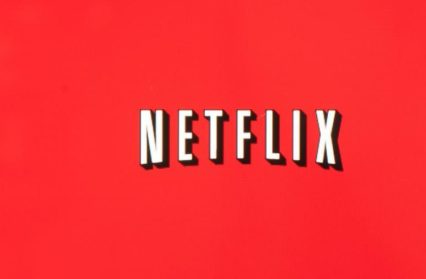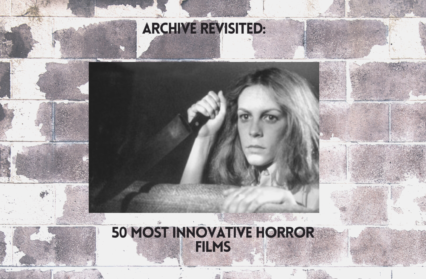With more and more people turning towards online services to provide entertainment as the order to ‘stay at home’ persists in Wales, Caragh Medlicott considers the impact streaming giant Netflix’s reliance on algorithmic data has on creativity in the film and television industry.
Do you ever get the feeling you’re being watched? In today’s online culture, personal data has become the bread and butter of elevated profit spinning. Each of our preferences, whims, and insecurities are logged in excruciating detail by algorithms buzzing in the background. Not even our downtime is sacred. When we watch Netflix, Netflix watches back. What do we click on? What makes us hesitate? What do we binge? What do we switch off? Each individual interaction is sieved into the whirlpool of data used to stretch every cent of Netflix’s multi-billion-dollar budget to the max.
If you’ve ever had a list of niche titles collected under an oddly specific Netflix category – say, ‘European TV dramas based on books’ (a real recommendation) – then you know you’ve been nailed. Of course, this setup is intended to improve and tailor user experience – Netflix will even recommend different shows depending on the time of day you tune in – but when data becomes the backbone of commissioning choices, you have to wonder what creativity is sacrificed in the process.
As Cindy Holland, Netflix’s ex Head of Original Content, told the Guardian in 2014: “We can identify subscriber populations that gravitate around genre areas […] That allows us to project a threshold audience size to see if it makes for a viable project for us”. Effective? Sure. But it’s hardly the creative background of David Chase working out his “mommy” issues by writing The Sopranos (the HBO classic was first rejected by Fox for being too genre-defying). Netflix has built its empire on data. Early frontrunners such as (the since lapsed) House of Cards used a formula common to many Netflix Original successes – an immediate, fast-paced story with a star-studded cast and solid name like David Fincher in the director’s chair.
This isn’t to say Netflix hasn’t innovated. Not only did it reinvent the wheel by trailblazing the streaming model so familiar to us today, if you turn the clock back half a decade or so, the little red screen was pioneering shows upholding watershed moments for representation and trotting new ground in the medium of animation (from Orange is the New Black to BoJack Horseman). The problem seems to have developed as Netflix has powered on – scooping up Oscars in its wake – with many well-loved, original shows cut loose at an increasingly ruthless rate. Ozark, The OA, Sense8, Santa Clarita Diet, Altered Carbon, and The Kominsky Method – these are just a few of the titles to have reached untimely ends despite adoring audiences and critical acclaim. And the executioner responsible? Netflix’s axe-wielding algorithm. The golden rule: data doesn’t lie.
A fresh wave of anger was unleashed recently when Netflix announced the cancellation of dramedies GLOW and Teenage Bounty Hunters while releasing the cloying Emily in Paris, and Ben Wheatley’s lukewarm Rebecca remake. It’s not hard to wrap your head around the outrage – these productions encompass what is worst about Netflix’s attempts to cast a wide net.
Emily in Paris is a beige, lazy dream of Parisian lifestyle (late mornings, long lunches, and handsome chefs on every corner); the teetering croissant-popping expat is played by Lily Collins, with Sex and the City creator Darren Star at the show’s helm. It was abundantly clear from the outset that the series held all the critical merit of a burned crêpe, yet a slew of think pieces followed its release, with many terming it a “hate-watch”. Wheatley’s Rebecca fared little better. Hitchock’s take on Daphne Du Maurier’s classic novel is cemented in cinematic history as a masterpiece, yet a chance for reinvention seemed reasonable enough with the Hays Code thrown out over fifty years ago and a modern lens to cast on a famously troubling relationship. But Wheatley’s adaptation is poorly cast (Armie Hammer bulldozes into scenes, walking solely with his shoulders, his quintessential American boy look always too perceptible) – its plot is never pulled taut, and Rebecca’s invisible presence is floppy and untangible. The marketing stills look great, but its effect is insipid; slick yet effete, like an alley cat that’s lost its claws.
Netflix might be propelling style over substance, but that is simply a symptom of a bigger problem: that we keep tuning in. After all, Netflix follows the data. In a year like 2020, it’s hardly surprising that viewers have been seeking easy-watching, but should this lead us down a rabbit hole of stylish vapidity in future years, too? And shouldn’t Netflix – which once seemed such a tonic to Hollywood’s sequel culture – be championing at least some productions that defy data? They certainly have the money.
So much great TV and cinema has come from liminal spaces and cult fanbases, yet what Netflix is seeking is not dedicated or passionate audiences but broad, widespread viewership. It is a formula that thrones the lowest common denominator in entertainment and that, in time, will surely continue to anger passionate fans whose shows are cancelled time and again. A recent plunge into aesthetic-driven productions and an attempt to build on “hate-watch” viewing figures will – if it succeeds – sacrifice the best stories.
I’m not naïve; Netflix is a business, and data is an effective way of driving its continual growth. It can even be of benefit to originality (the climbing costs of existing shows is why Netflix often opts to kill one series while commissioning another). Yet, if Netflix made just a little space for maverick projects, it could well stumble upon the next Breaking Bad of the ’20s era. Perhaps it’s wistful thinking, but I’d like to believe that past data can’t always predict future behaviour; times change, what viewers want in the bleak winter of 2020 may be very different to what piques their interest this time next year.
And could the answer also lie in the construction of TV series themselves? The model most commonly used – say, for example, with Stranger Things – sees new series recommissioned (providing a large enough audience still exists) and the creators can then continue creating. This usually works for a while, but the longer it goes on the more it pushes stories into unlikely, incredulous spaces. In most cases, these series will peter out to a flat, underwhelming end. But TV shows that plan ahead, that know the story they want to tell and how many series’ they’ll need to do it in, usually finish on a high (think: Fleabag, Sharp Objects, Dark). It might not save every series from cancellation, but telling full, intentional stories in a clipped number of series could solve the issue of accumulating costs for existing shows, while ensuring dedicated fans get the finales they deserve.
Netflix is projected to spend $26 billion on original content by 2028 (its budget for this year was over $17 billion). Competition is growing ever-steeper with Apple TV+ and Disney+ recently added to the ranks of streaming platforms putting out original content. Data will continue to play a big part in Netflix’s floundering content strategy, but if they really want to retain their crown, dipping a toe in the avant-garde might just be the best way to shake things up and keep subscribers interested. As they say: no risk, no reward.
You might also like…
Gary Raymond reviews the Netflix adaption of the 2014 horror novel by Josh Malerman, Bird Box an original and dark post-apocalyptic narrative.
Caragh Medlicott is a Wales Arts Review senior editor.



 Enjoyed this article? Support our writers directly by buying them a coffee and clicking this link.
Enjoyed this article? Support our writers directly by buying them a coffee and clicking this link.








